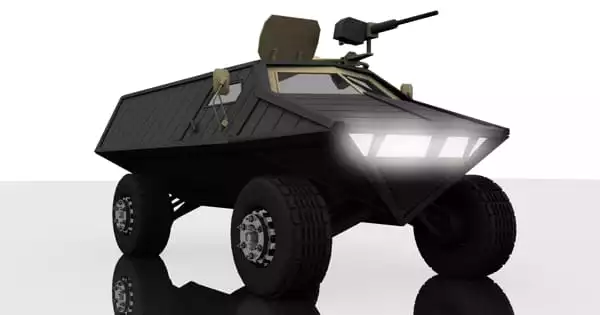Dynamic armour, also known as electric armour, is a type of reactive armour designed to protect ships and armoured fighting vehicles from shaped charge weapons. A strong electric current is used in dynamic armour to disrupt the jet of ionized gas produced by a warhead.
The Defence Science and Technology Laboratory in the United Kingdom has recently developed electrically charged armour. Two thin shells separated by insulating material are fitted to a vehicle. The outer shell carries a massive electric charge, while the inner shell is grounded. If an incoming HEAT jet needle made of a conductive metal, such as copper, penetrates both shells, it forms a bridge between them, and electrical energy discharges quickly through the jet, disrupting it.
So far, trials have been promising, and it is hoped that improved systems will be able to protect against kinetic energy penetrators. This technology is being considered by the designers of the Future Rapid Effect System (FRES) series of armored vehicles.
Non-Explosive Reactive Armor (NERA or NxRA) is made of a passive material sandwiched between two metal plates, such as rubber. The loads imposed on the vehicle’s structure by NERA are much lower than those imposed by ERA, allowing it to be used on lighter vehicles. The most common type is explosive reactive armour (ERA), but there is also self-limiting explosive reactive armour (SLERA), non-energetic reactive armour (NERA), non-explosive reactive armour (NxRA), and electric reactive armour variants. Unlike ERA and SLERA, NERA and NxRA modules can withstand multiple hits, but a second hit in the same location could potentially penetrate any of them.
An explosive reactive armour element is composed of a sheet or slab of high explosive sandwiched between two plates, typically metal, referred to as the reactive or dynamic elements. When a penetrating weapon strikes, the explosive detonates, forcing the metal plates apart and damaging the penetrator. The projected plates disrupt the metallic jet penetrator in the presence of a shaped charge, effectively providing a longer path-length of material to be penetrated. In the presence of a kinetic energy penetrator, the projected plates deflect and break up the rod.
Electric reactive armour is a relatively new reactive armour technology. This armour is constructed from two or more conductive plates separated by an air gap or an insulating material, resulting in a high-power capacitor. A high-voltage power source charges the armour when it is in use. When an incoming body penetrates the plates, the circuit closes to discharge the capacitor, dumping a large amount of energy into the penetrator, which may vaporize or even turn it into plasma, significantly diffusing the attack. It’s unclear whether this is supposed to work against both kinetic energy penetrators and shaped charge jets, or just the latter. As of 2005, this technology had not yet been introduced on any known operational platform.
















